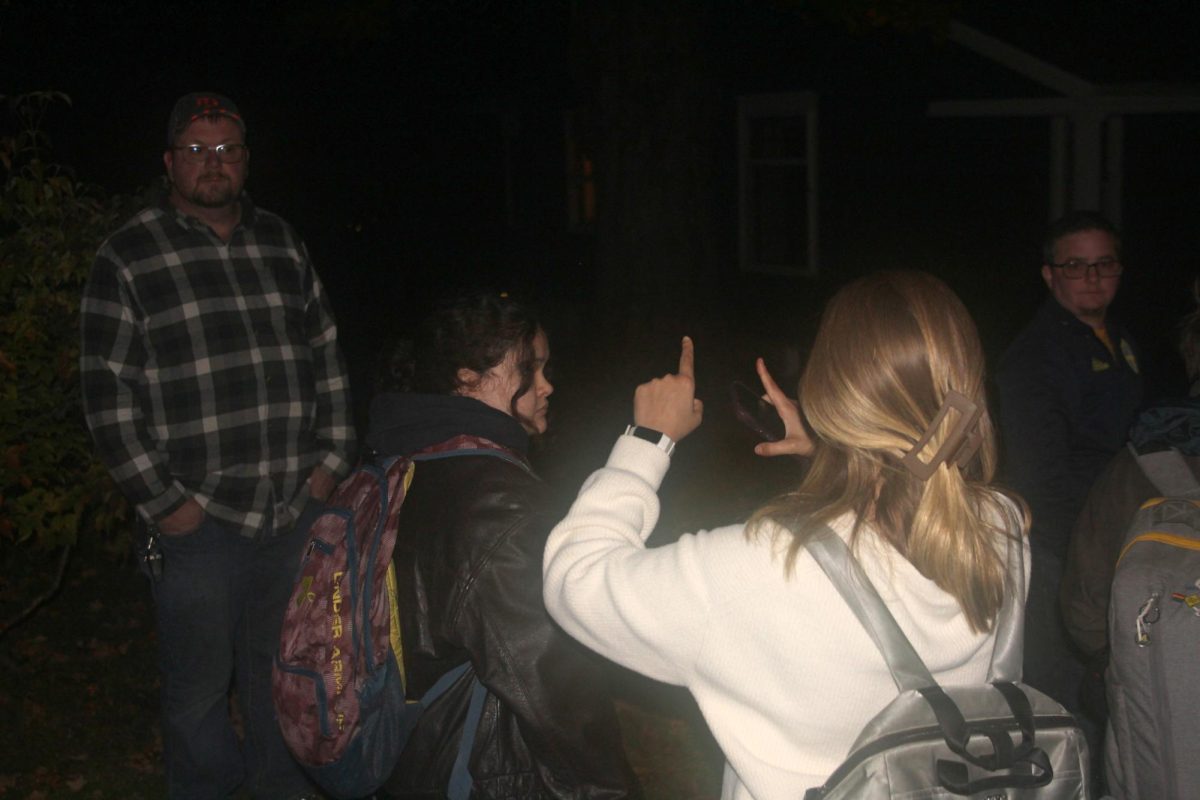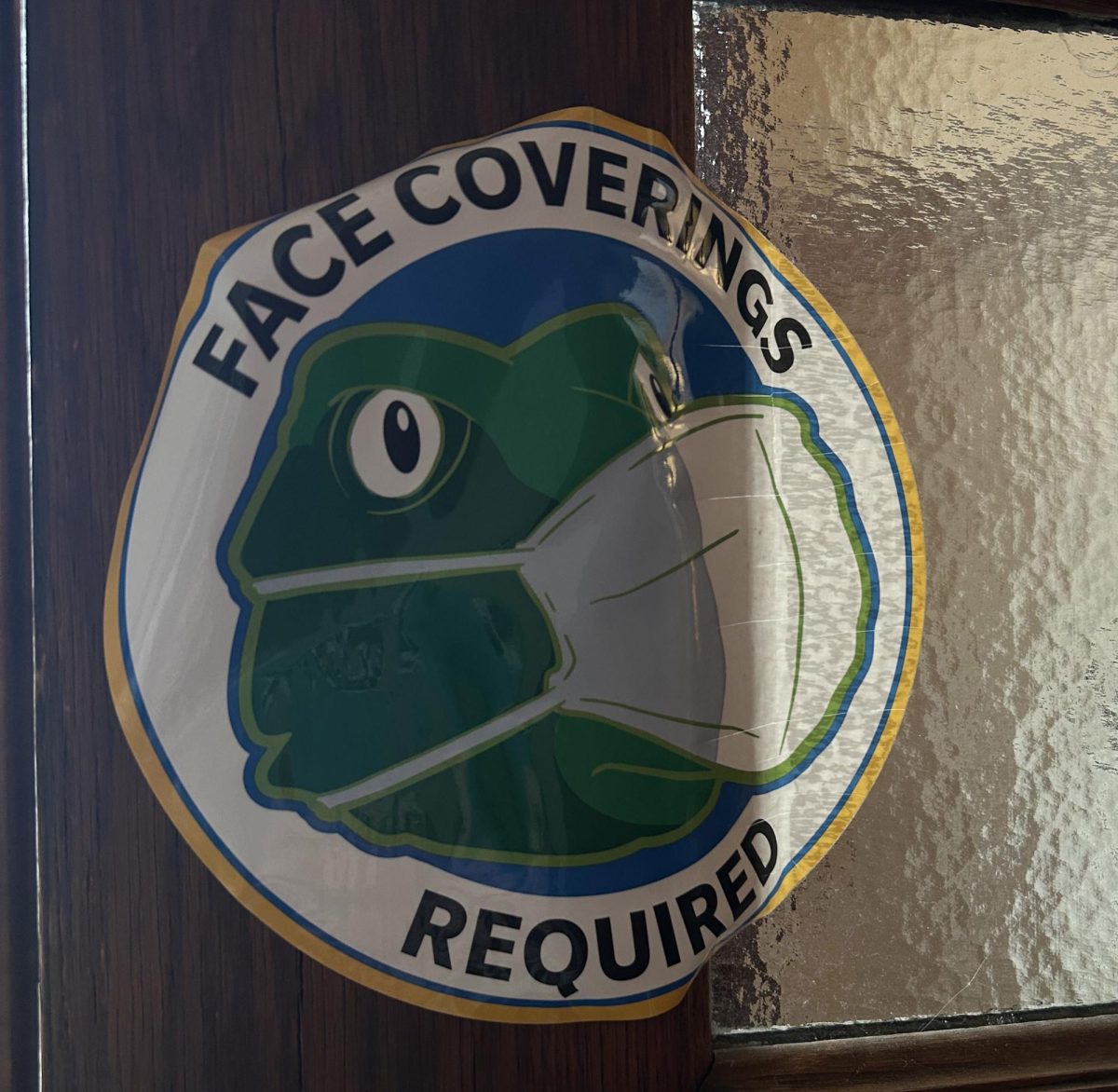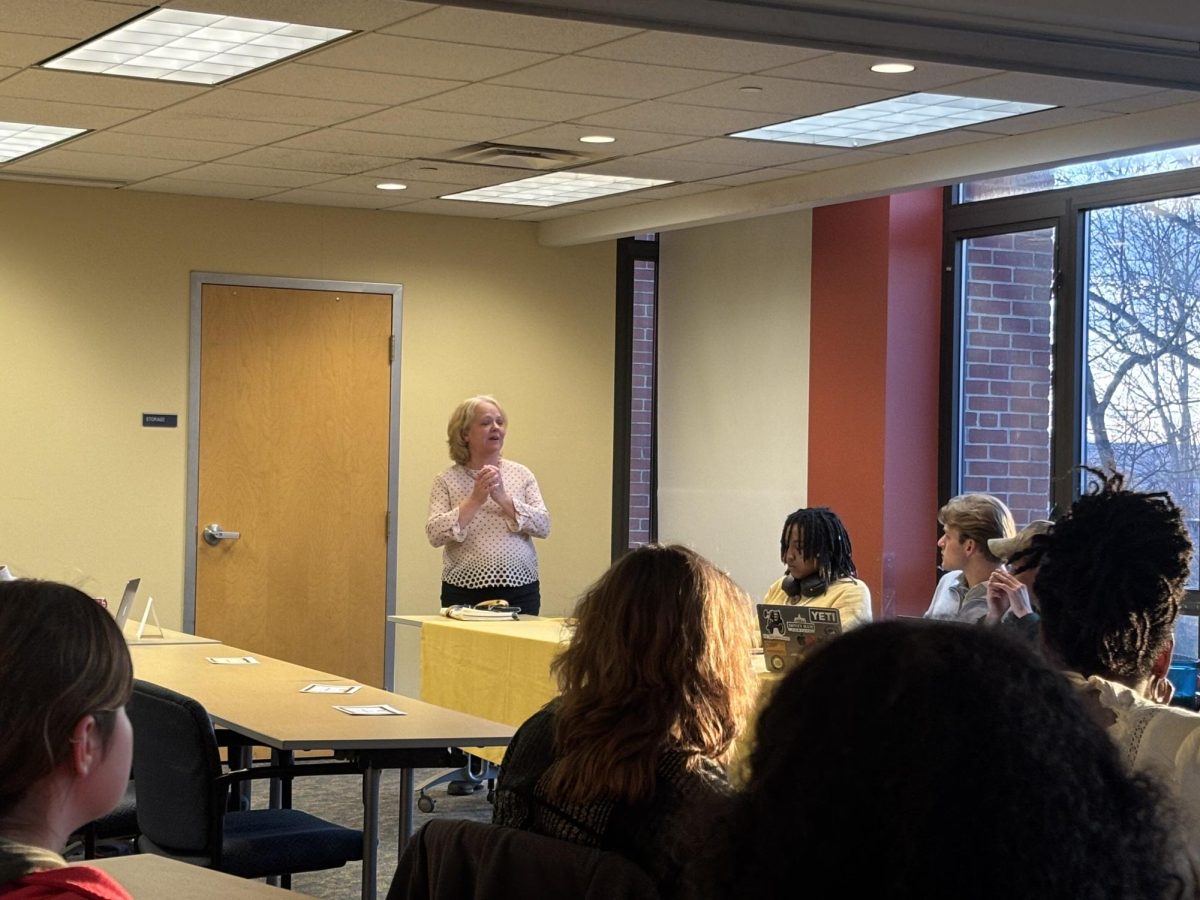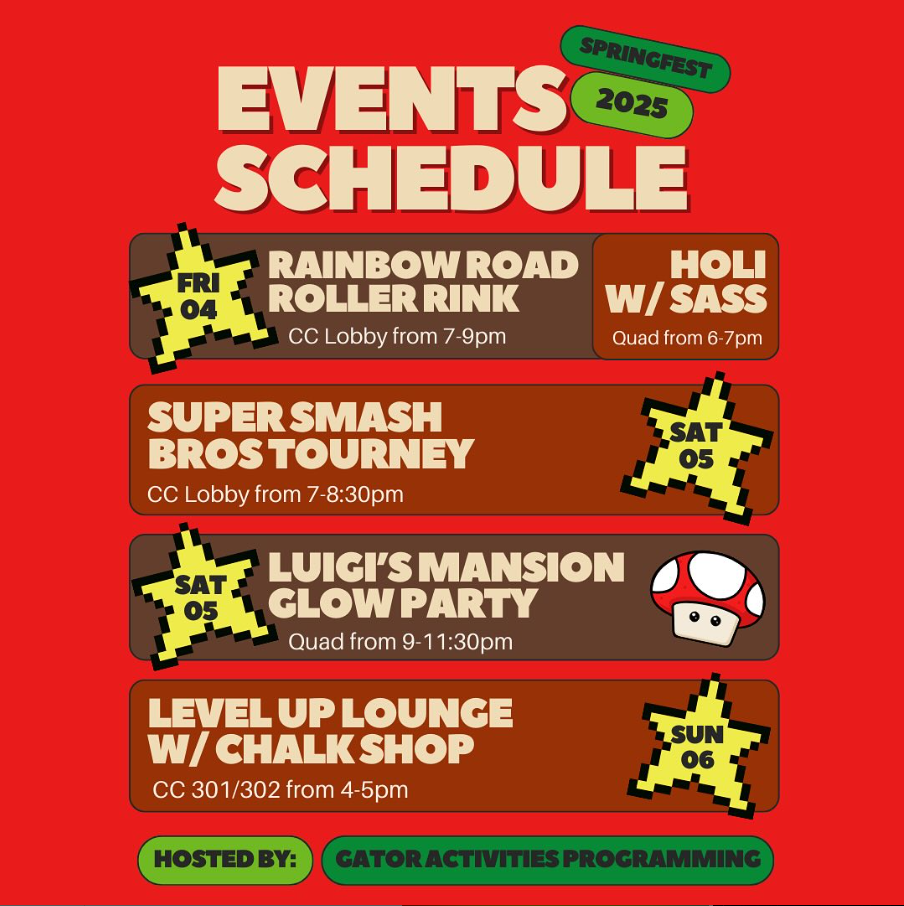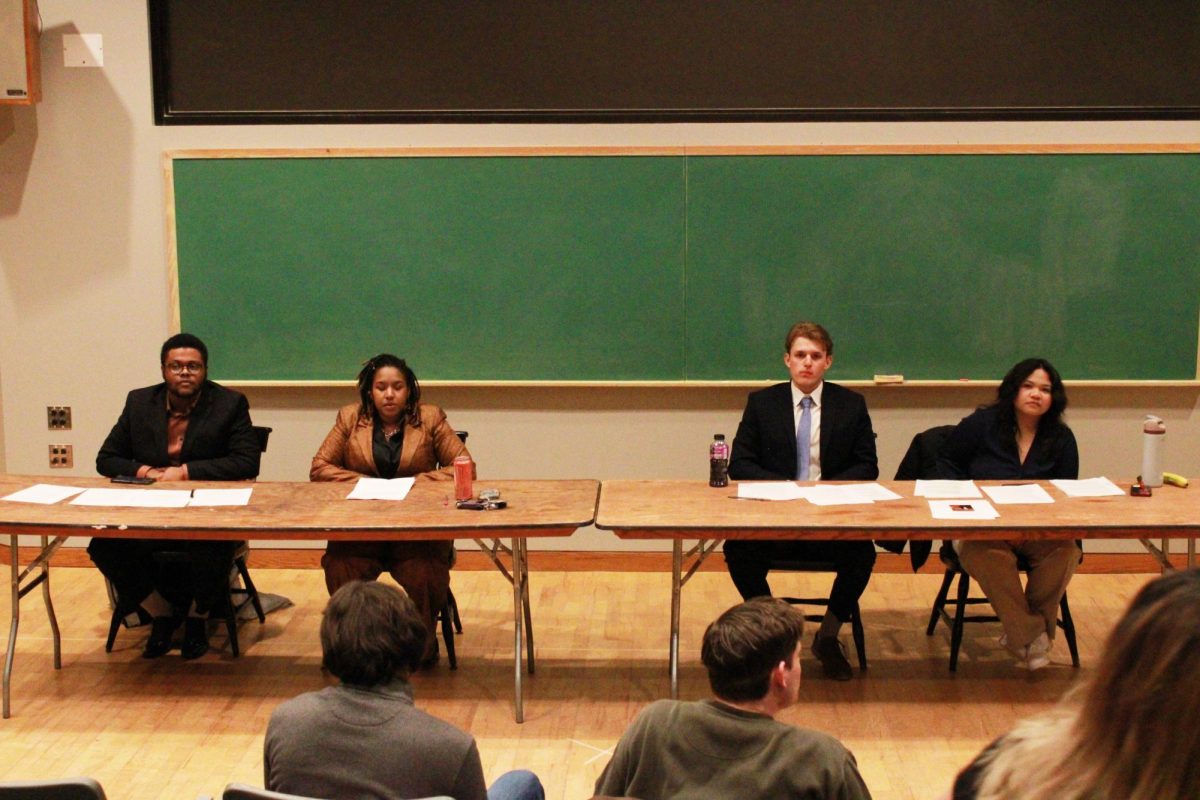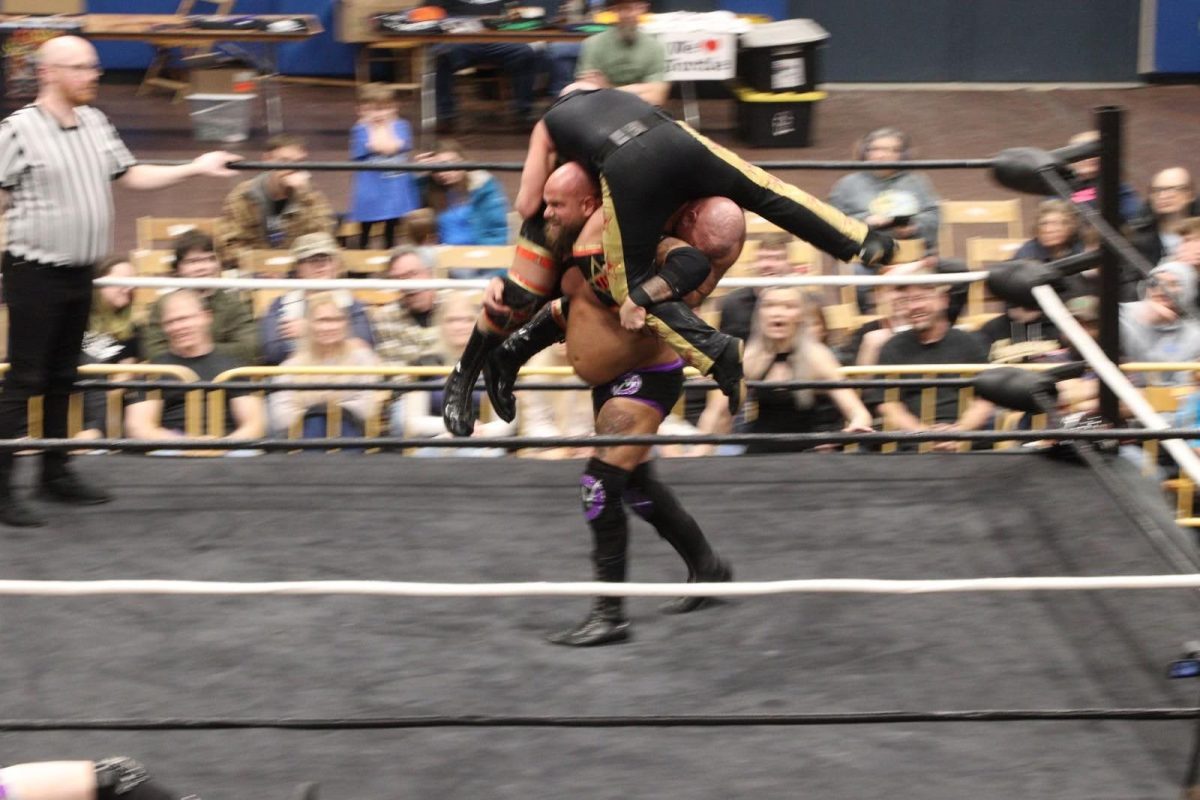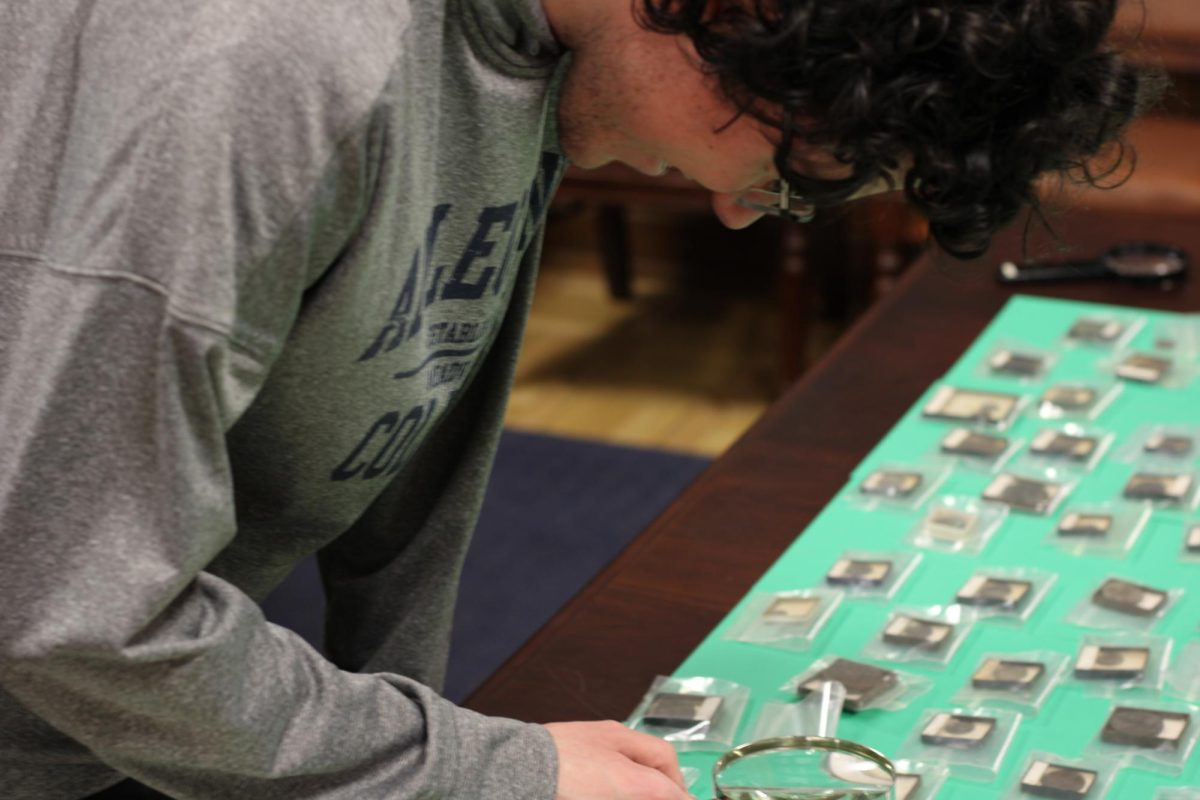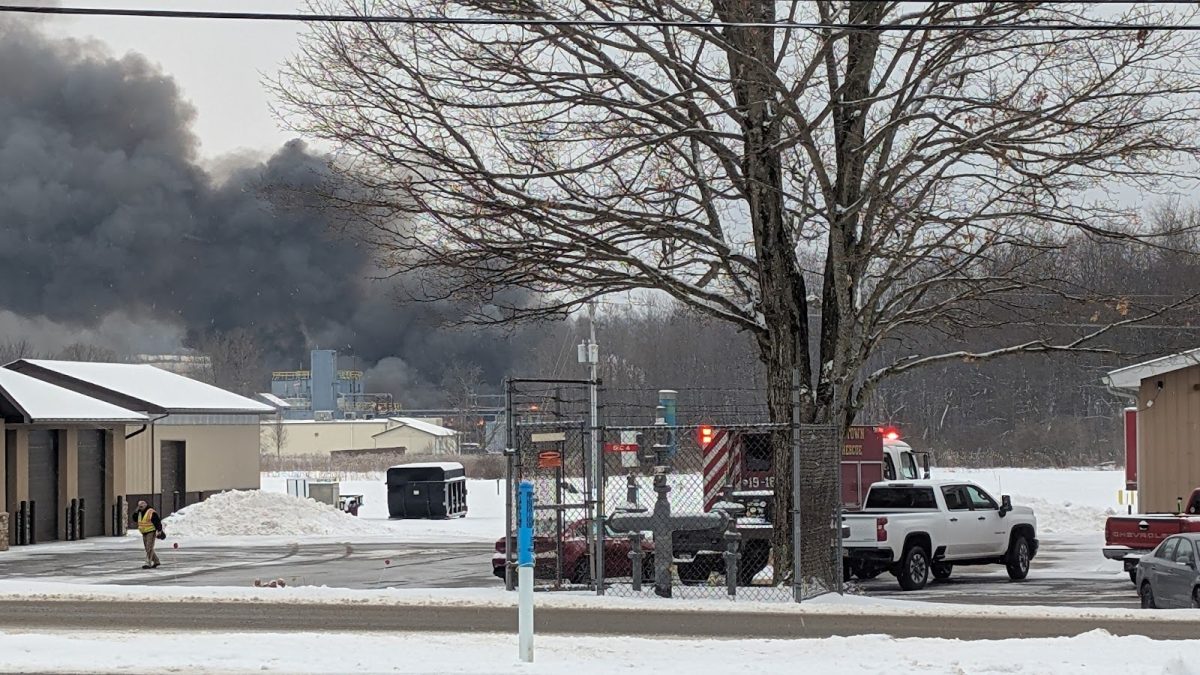If two’s company and three’s a crowd, then eight might be the participants of the Light Walk, hosted by the Allegheny Student Government and the Office of Public Safety on the evening of Tuesday, Oct. 24. The participants — the director of Public Safety, dean for Student Life, director of Physical Plant and a facility manager, and four representatives from ASG — took just over 90 minutes to walk most of Allegheny’s campus. The goal of the lightwalk, according to ASG, is to look for places to improve lighting and visibility under the cover of night.
What they found was better than what ASG Director of Community Relations Cameron Lesher, ’24, expected.
“There are changes going on even without us pushing so hard to get those changes,” Lesher said. “That made me happy to see that that’s a constant thing that’s being thought of.”
While ASG President Nicole Recio Bremer, ’25, also spoke highly of the experience, she was less impressed by the turnout.
“I would have liked more students to be here,” Recio Bremer said, adding that she learned how college staff already review and update lighting. “It was productive, also, for students to learn what can and cannot be done for things that are not school responsibility.”
The walk comes just over a month after a Sept. 21 sexual assault, which the Meadville Police Department said took place in a residential building on campus
“It (the Light Walk) is not the only thing we do, it’s not the only thing we’re working on right now, it’s one of many things,” said Dean for Student Life Trae Yeckley. “We want students to feel safe all over campus — not just in the residence halls but also not just outside the residence halls.”
Both Recio Bremer and Lesher encouraged students to reach out both to college staff and their student representatives about safety concerns.
“If there is anything that students might not be willing to share with staff, they could share it with ASG,” Recio Bremer said.
“The best thing that students can do is reach out and reach out to who they feel comfortable doing,” Lesher added. “Obviously, all of these people are here because they’re serving students and they’re wanting to improve things. We know some basic things that we can look to improve, but we don’t know those very specific needs unless that’s being shared with us.”
Murray to Crawford
The walk began from the Office of Public Safety at Murray Hall and headed south towards College Court. While discussing lighting on Highland Avenue, the street that runs between the Wise Center and the Henderson Campus Center, Director of Physical Plant Joe Michael explained the balancing act of outdoor lighting.
“We don’t want it to be daylight, but we want you to feel safe,” Michael told the ASG representatives.
Walking into College Court — a collection of small townhomes between the library and the Phi Kappa Psi house — Michael began what would become a reoccuring theme of the event by pointing out an exterior light that had been recently added.
Another recurring theme began in the courtyard of College Court itself: the cataloging of burnt-out or removed lightbulbs; two such pieces of equipment were noted over entrances to College Court apartments.
Between College Court and Sherman Street, Recio Bremer pointed out a dark path headed towards the Pelletier Library.
The path was supposed to be lit by a light on the back of an adjacent college-owned house. The bulb was hardwired to be on, but Director of Public Safety James Basinger pulled out a flashlight and confirmed that someone, likely the residents of the house, removed the bulb entirely.
Proceeding onto Sherman Street and towards the Delta Tau Delta house, ASG representatives had few critiques.
“This is better than I thought,” Recio Bremer said while walking towards Sherman Street.
The group then looped back around to pass the Phi Kappa Psi house en route to Ravine-Narvik Hall. The intersection of East College Street and Highland Avenue was once one of the darkest places on campus, though upgrades to the area have now made it one of the brightest, Basinger said.
Circling up and through Ravine, Lesher suggested an additional light could be installed on the side of Ravine that faces East College Street, to light students’ path from the street up to the dorm.
Michael did not disagree with adding a light there, but noted the private residences across the street. Any additional light, he said, would have to be shaded to “throw” its light to just the Ravine side of the street.
Another dozen feet down the road, however, a possible solution was found: A burnt-out streetlight maintained by the City of Meadville.
The inoperable light represented the answer to many of ASG’s concerns with lighting on the outskirts of campus — the college only has control over its own property and buildings, not streets maintained by local government.
The exception to the “streetlight rule” is North Main Street, the next stop in the walk. The more ornate lights along North Main are maintained by Physical Plant through an agreement with the city, and one such light near Carnegie Hall had burnt out as well.
After walking through Loomis Street — and noting a burnt-out bulb on the front porch of another Allegheny-owned house — the walk moved back onto campus proper, pausing for a brief discussion on whether to keep the valley under the Rustic Bridge unlighted.
“Everything around it is lit, so you can see who goes in and out,” said Class of 2026 President Lorenzo Scarnati.
Lesher also liked the idea of keeping the area dark.
The north end of the bridge itself has been brightened recently. When the college added a ramp to make the bridge more accessible, workers also installed a lamp, Michael said.
The group continued up past Brooks and towards the Prayer and Meditation House. Basinger pointed out an additional set of exterior lights on the PAM House that had been added after feedback from last year’s Light Walk.
The next stop was the intersection between Steffee and Quigley Halls. Initially, students thought the area was too dark, but Michael pointed out that light from the nearby Steffee Hall of Life Sciences diffused into the area. He added that the Steffee lights had been newly replaced.
Facilities Mechanical Supervisor Bryan Brown added that there were lights installed on Quigley Hall that would brighten the area if they were not blocked by a clump of trees.
“Some of that light gets robbed by the vegetation,” Brown said.
The walk then cut across to East John Street — the street that runs between the Vukovich Center for Communication Arts and the North Village Complex. At East John’s intersection with North Main, another pair of dead or dying streetlights were cataloged.
ASG Director of Diversity, Equity, and Inclusion Kaleialoha Froning, ’24, said that the route from the Vuk to NV had felt dark earlier in the year. However, a set of lights have been installed following the leveling of Caflisch Hall, the empty site of which is adjacent to the Vuk.
“It’s definitely a lot better than what I remember at the beginning of the year,” Froning said.
The final stop in the Light Walk was the parking lot of Crawford Hall, which Recio Bremer noted should be brighter.
“If we could do something like Ravine to this place, that would be great,” Recio Bremer said.
Lighting the Crawford lot, however, runs into some of the same issues as other areas of the campus — the college only owns half the lot, and leases the other half.
All in all, Yeckley considered the walk a success.
“Any Light Walk we do is a productive Light Walk,” Yeckley said. “We’re able to identify lights that have burned out. It’s always helpful to have students come and give us a fresh perspective — different students are taking different paths.”




